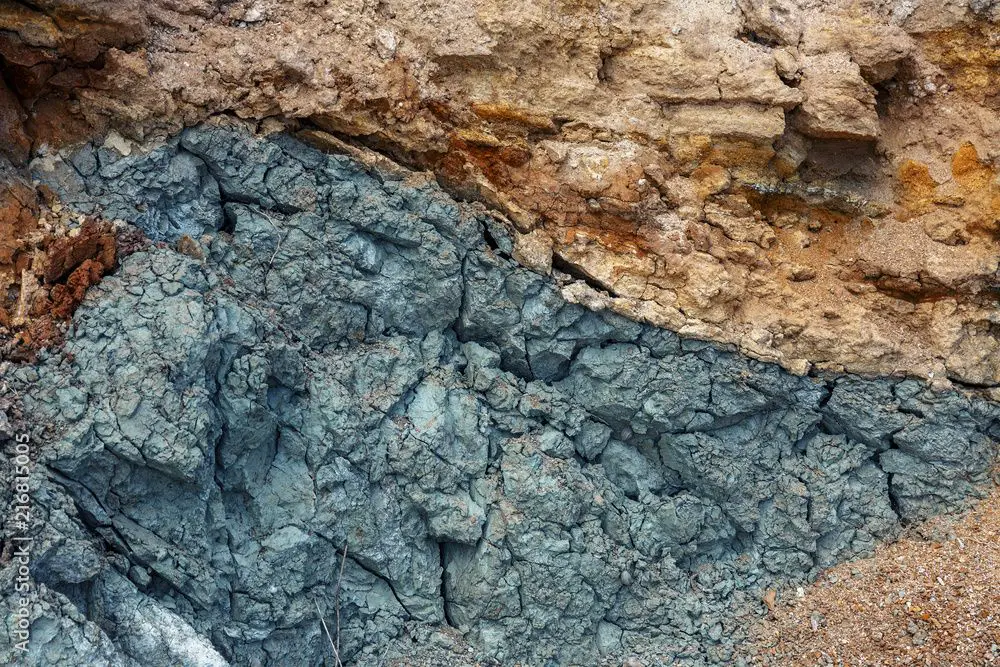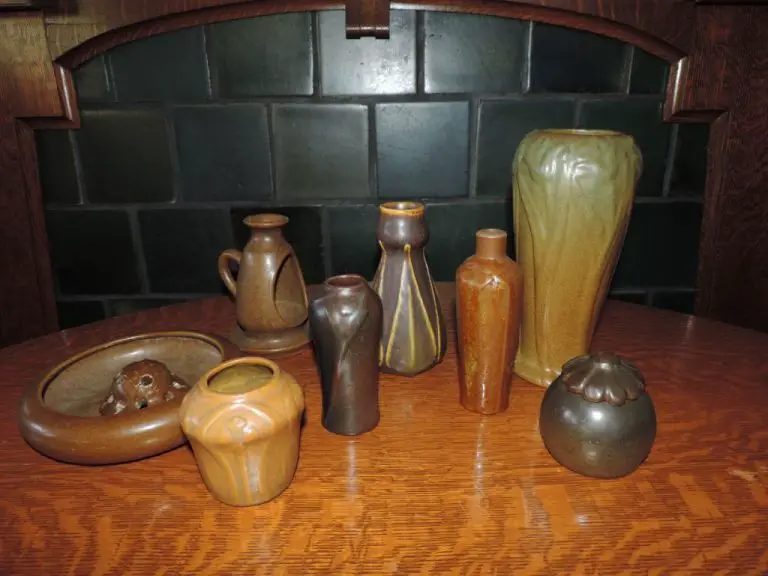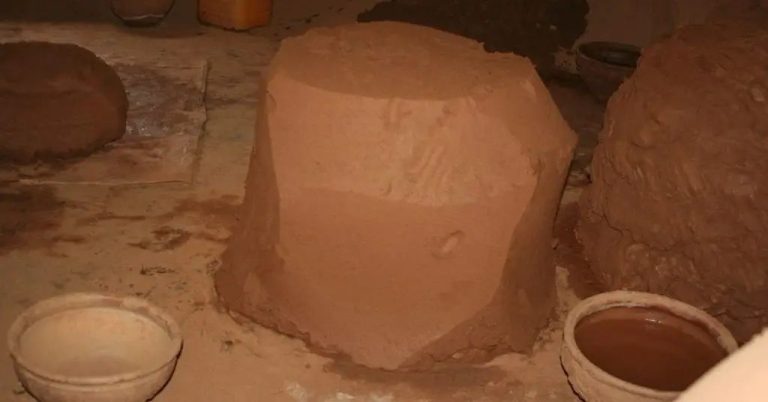Why Is Blue Clay Valuable?
Blue clay, also known as illite clay or Presumpscot clay, is a valuable type of clay known for its deep blue-gray color. While most clays are gray, red, or brown, the unique blue hue of this clay makes it highly prized. Blue clay has been used for centuries in a variety of applications including skincare, medicine, cosmetics, ceramics, and industrial uses. Its rarity and unique properties make it a coveted material around the world.
What is Blue Clay?
Blue clay is a type of clay soil that contains high amounts of clay minerals that give it a distinctive blue or blue-green color. The blue color comes from the presence of ferrocyanide compounds produced when the clay is formed under water-logged or reducing conditions with little oxygen present (1).
The main clay mineral present in blue clay is montmorillonite. Montmorillonite has a layered structure that allows water and nutrients to be stored between the layers. This gives blue clay the ability to swell and shrink in response to changes in soil moisture content (2).
Blue clay feels slippery and smooth when wet due to the platy structure of the montmorillonite particles. When dry, it becomes very hard. The small particle size and plate-like shape allow the clay particles to pack tightly together. Blue clay therefore has low permeability and poor drainage (1).
Some key properties of blue clay soils include:
- High cation exchange capacity (CEC)
- Good water holding capacity
- Low permeability when compacted
- Slow drainage
- High shrink-swell potential
- Slickensides and wedge-shaped aggregates when dry

These properties allow blue clay to retain nutrients and moisture that are beneficial for plant growth. However, the poor drainage can lead to waterlogging issues (2). Proper soil management practices are required when dealing with blue clay soils.
(1) https://frugalentrepreneur.com/what-is-blue-clay-soil/
(2) https://www.palmtalk.org/forum/topic/19672-florida-clay-soil/
Where Blue Clay is Found
Blue clay is found primarily in arid to semi-arid environments, often in areas once covered by inland seas. Some of the major deposits of blue clay are located in the southwestern United States and include:
The Chinle Formation in Arizona, Utah, New Mexico and Colorado contains rich deposits of blue clay, particularly in the Petrified Forest Member which has abundant blue clay due to its deposition in ancient floodplains.
The Clarno Formation in Oregon where ancient volcanic mudflows and ash beds were weathered into blue clay deposits.
Blue clay deposits are also found in Texas, Oklahoma, Kansas and South Dakota from the weathering of shale formations like the St. Peter Sandstone.
In general, blue clay forms in arid climates from the chemical weathering of volcanic ash, shale and mudstone. It often indicates there was once a shallow inland sea or floodplain environment present when the original sediments were deposited.
Uses in Skincare
Blue clay is valued in the skincare industry for its many benefits when applied topically. Several of blue clay’s most notable skin benefits include:
Blue clay can absorb excess oil from the skin’s surface. The clay’s absorptive properties help draw out impurities while reducing shine caused by oily skin. Applying a blue clay mask can have a drying effect that leaves skin feeling clean and balanced.
The clay also provides gentle exfoliation to remove dead skin cells, unclog pores, and smooth skin’s texture. The tiny mineral particles in blue clay create a scrubbing effect when massaged into the skin. This mild physical exfoliation reveals fresher, brighter skin.
Additionally, blue clay delivers anti-inflammatory properties from its rich mineral content. It can soothe irritation, redness, itching, and other inflammatory skin conditions. The soothing minerals in blue clay calm and comfort sensitive skin.
Uses in Poultices
Blue clay has been used in poultices for pain relief and detoxification for centuries. When mixed with water into a paste, blue clay can be applied topically as a poultice to provide therapeutic benefits.
According to https://earthsclaystore.com/products/blue-clay-powder, blue clay poultices can help relieve pain and inflammation from sprains, strains, arthritis, and sore muscles. The negatively charged ions in blue clay are thought to draw out toxins, heavy metals, and other impurities from the skin, helping to detoxify the body.
Research has shown that blue clay poultices can even help fight wound infections. A study published on the Mayo Clinic website found that blue clay has antibacterial properties against bacteria like E. coli and Staph aureus. Applying a blue clay poultice to wounds may help prevent infection and promote healing.
Other Medicinal Uses
Blue clay has been used internally as a dietary supplement and detox aid for centuries. According to research from the National Institutes of Health, the negatively charged particles in blue clay are able to bind to and trap toxins, heavy metals, and positively charged pathogens in the gut, preventing their absorption into the body (Morrison, 2016 https://www.ncbi.nlm.nih.gov/pmc/articles/PMC4705759/).
When ingested as a drink or supplement, the bound toxins are eliminated from the body through normal digestion. Studies show blue clay is effective at reducing levels of heavy metals like lead and mercury in the body and can also help eliminate bacterial pathogens (Morrison, 2016). The detoxifying properties of blue clay make it a valuable supplement for supporting overall health and wellbeing.
Blue clay is considered very safe for internal use when obtained from a verified source. It is often mixed into drinks or taken in supplement form to provide its detox and cleansing benefits. Typical doses range from 1-2 teaspoons taken 1-3 times per day.
Uses in Cosmetics
Blue clay is highly valued by cosmetics manufacturers for its ability to add slip, bulk, and natural color to cosmetic products like lotions, creams, masks, soaps, and shampoos. Blue clay helps these products glide on smoothly and provides a pleasing texture and appearance.
According to Anne’s Apothecary, blue clay is added to their clay mask product because of its natural colour and ability to nourish skin with minerals while soothing and hydrating the skin.
The Outset also uses blue clay in their Purifying Blue Clay Mask for its ability to gently draw out impurities from the skin while brightening and improving skin texture.
As a natural bulking agent, blue clay allows manufacturers to produce high quality skincare products without relying on chemical fillers and synthetics. The soft, smooth texture blue clay provides makes it ideal for customer satisfaction.
Use in Ceramics
Blue clay is commonly used in ceramics and pottery to strengthen clay bodies and improve their workability. According to digitalfire.com, “blue clay is a fine particled highly plastic secondary clay used mainly to impart plasticity to clay and porcelain bodies.” Its fine particles fill in the gaps between other clays, resulting in a less porous and stronger finished piece. Blue clay also increases the plasticity or workability of clay, making it smoother and easier to manipulate into shapes. On the subreddit r/Pottery, potters discuss requests for advice on working with natural blue clay sourced locally and how best to incorporate it into clay bodies for wheel throwing and handbuilding. The plastic nature of blue clay makes it a useful addition for potters looking to improve the strength and workability of their clay.
Other Industrial Uses
Blue clay has a number of important industrial applications beyond cosmetics and medicine. One of the most significant uses is as a drilling mud in oil and gas drilling operations. Drilling muds help lubricate and cool the drill bit, carry rock cuttings to the surface, and provide hydrostatic pressure to prevent blowouts. According to a study by AZO Build, blue clay is an effective drilling mud because of its high plasticity, thixotropic properties, and ability to prevent fluid loss. These characteristics allow blue clay muds to suspend cuttings and maintain the integrity of the borehole.
Another major industrial use of blue clay is in wastewater treatment. The high adsorption capacity of blue clay makes it effective at removing heavy metals, dyes, and other contaminants from wastewater. Research has shown that blue clay can be used to absorb lead, copper, zinc, and manganese ions, as well as dyes like methylene blue. The cation exchange capacity of blue clay is key to its effectiveness in wastewater treatment applications.
Conclusion
In summary, blue clay has significant value and a wide variety of uses. Its unique composition, dense mineral content, and absorbent properties make it highly prized in industries ranging from cosmetics to construction.
Blue clay’s ability to cleanse, exfoliate, and draw out impurities has led to its popularity in skincare, medicine, and spa treatments. When applied topically, blue clay can improve skin health, reduce inflammation, and fight bacteria. Taken internally, it has been used traditionally as a detoxifying and healing poultice.
The clay’s rich mineral content, including calcium, magnesium, potassium, iron, and silica, also make it ideal for cosmetics and ceramic glazes. It provides vivid blue and green hues as well as beneficial strength and durability. Additionally, blue clay is used in industrial applications like oil drilling and wastewater treatment, where it acts as an effective absorbent and filtration material.
While relatively rare, quality deposits of blue clay command high prices for their versatility and natural benefits. As consumers and industries continue to value sustainability and natural ingredients, the unique properties and applications of this clay are sure to make it even more sought-after in years to come.



